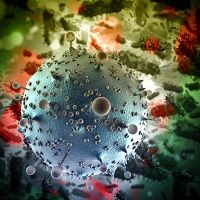Article
Longer Interval Between HIV Screening Affects CD4+ Counts at the Time of Diagnosis
Author(s):
Researchers report that waiting more than 2 years between HIV screenings is associated with double the rate of AIDS by CD4+ criteria at the time of HIV diagnosis when compared with more frequent testing.

“Extending intervals between HIV screening tests is associated with small but important differences in initial CD4+ counts. In fact, compared with more frequent testing, extending the screening interval to 2 years or more is associated with nearly twice the rate of immunologic AIDS, as defined by CD4+ criteria at the time of HIV diagnosis,” said Catherine Berjohn, MD, MPH, of the Infectious Diseases Department at the Naval Medical Center in San Diego, CA, in research presented at IDWeek 2015.
IDWeek 2015 is a joint meeting of the Infectious Diseases Society of America (IDSA), the Society for Healthcare Epidemiology of America (SHEA), the HIV Medicine Association (HIVMA), and the Pediatric Infectious Diseases Society (PIDS).
Lower CD4+ counts at diagnosis have been attributed to infrequent testing and subsequent delay. To study this further, Berjohn and colleagues used retrospective study involving 1258 United States military service members who are subject to mandated screening every 1 to 2 years who seroconverted from 2000 to 2013 and who chose to voluntarily participate in the US Military HIV Natural History Study. It is important to note that this time period encompasses the time period of the US government’s policy of “Don’t Ask, Don’t Tell.”
The data used include patient data from a cohort that has been ongoing since 1986 and consists not only of active duty personnel but retirees and adult dependents of service personnel. The effects of testing interval on CD4+ values at HIV diagnosis were controlled for calendar year, gender, race, age, and viral load. It was not, however, possible to capture the last negative test. The population studied was 97% male with a median age of 27 years and was racially heterogeneous. The mode of transmission was undeterminable for most patients.
Of these patients, about 77% were diagnosed less than 2 years from the date of their last negative test, and 40% were diagnosed less than 1 year. The average overall CD4+ account was 466 cells/µL with an adjusted difference of —35 cells/µL (lower CD4+ cell count) for those with a testing interval of 1 to 2 years and 64 cells/µL for those with a testing interval of 2 or more years.
“The HIV testing interval was statistically significantly associated with lower CD4+ counts at HIV diagnosis. These data were significant even after controlling for calendar year,” Berjohn explained.
Overall, about 4% to 5% of patients who had been tested every 1 to 2 years exhibited immunologic AIDS by CD4+ criteria compared with 9% in those who underwent testing every 2 or more years. This difference was statistically significant (P=0.027).
No pattern associated with calendar year was found. The testing interval did not change over time. Non-white race, particularly African-American or Hispanic race, was associated with lower CD4+ counts.
“The difference in percentage is small (9% with 2 years or more screening interval compared with 4% to 5% for shorter screening intervals), but it is not insignificant. More frequent screening intervals may end up being cost effective, considering the potential long-term costs of transmission and other factors. By reducing the screening interval, you increase the chances of catching immunologic AIDS before it progresses,” she concluded.



